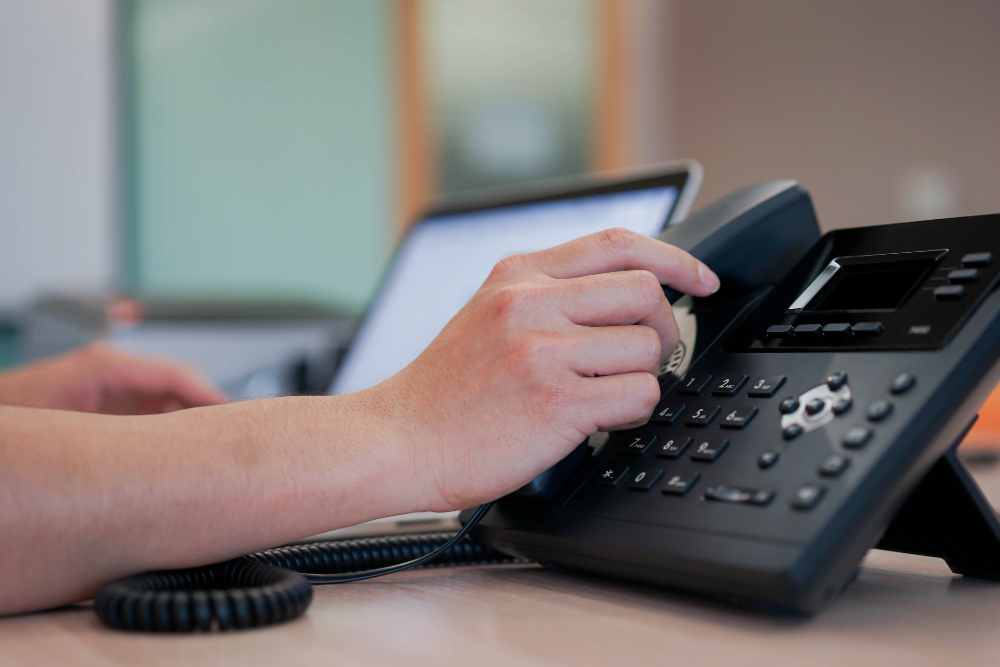More than just a series of numbers, the 1300 number acts as a nationwide calling card, providing a centralised avenue for your customers to connect, regardless of their physical location. By enhancing your business’s professional image and broadening your outreach, a 1300 number not only grants your organisation a national presence but also provides customers with a convenient and cost-effective means to engage with your brand.
Wondering how to get started?
Acquiring a 1300 number in Australia is a strategic move that involves a few straightforward steps, allowing you to establish a powerful communication channel that resonates with professionalism and accessibility. From selecting a service provider to configuring routing options, let’s unravel the process that will elevate your business’s connectivity and presence on a national scale.
What are 1300 Numbers?
1300 numbers are inbound numbers commonly used by businesses as a national point of contact. These numbers are known for their versatility and convenience, offering companies a single, easy-to-remember contact number for customers anywhere in Australia. 1300 numbers are virtual numbers and are not tied to a specific geographic location, making it an ideal choice for businesses looking to establish a unified and professional image.
Benefits of 1300 Phone Numbers
- National Presence: One of the primary benefits is the creation of a national presence. Businesses can project a professional image by offering customers a single national contact number, regardless of the company’s physical location.
- Memorability: 1300 numbers are easier for customers to remember compared to standard landline numbers. This memorability can contribute to increased customer recall and engagement.
- Call Routing Flexibility: Businesses can customise call routing options, directing calls to specific destinations based on factors such as time of day or location. This ensures efficient call management and responsiveness.
- Cost Sharing: With 1300 numbers, call cost is shared between the business and the caller. This can be advantageous for businesses that want to offer a centralised contact point without shouldering the entire cost of incoming calls.
- Marketing Effectiveness: Using a 1300 number in marketing materials, advertisements, and promotions can enhance the effectiveness of campaigns. The simplicity and professionalism associated with these numbers make them a valuable asset in branding efforts.
- Increased Accessibility: 1300 numbers make businesses more accessible to customers, fostering improved communication and customer satisfaction. The ease of reaching a centralised contact point can contribute to positive customer experiences.
How does 1300 Numbers Work?
When a customer dials a 1300 number from a mobile device, the call smoothly connects to the designated business phone lines. The significant benefit lies in the flexible configuration of call routing. This adaptability allows even small businesses to customise their 1300 number settings, directing calls to different destinations like mobile phones, landlines, or centralised call centres. Such customisation addresses the specific preferences and operational needs of the business, ensuring ease of access for callers, regardless of their geographical location.
Moreover, businesses can capitalise on features such as time-based routing or call overflow to efficiently manage incoming calls, particularly during peak hours. The versatility inherent in 1300 business numbers renders them highly flexible, catering to the dynamic needs of diverse organisations.
Setting Up a 1300 Number: Understanding the process
Obtaining 1300, a smart number, is a straightforward process that can greatly benefit businesses and organisations looking for a centralised and professional communication solution. Here’s a breakdown of the process of setting up your 1300 number:
Choose a Service Provider
Start by researching and selecting a reputable VoIP service provider in Australia that offers 1300 number services. Look for providers that offer competitive pricing, reliable service, and the features you require.
Determine Your Needs
Consider your specific business requirements. How many incoming calls do you anticipate? Do you need advanced call routing options, such as time-based routing or call forwarding? Think about any additional features you may need, such as call recording or reporting.
Select Your 1300 Number
Work with your chosen service provider to choose an available number that aligns with your branding and is easy for customers to remember, ensuring it suits your business. Service providers have access to a pool of available 1300 numbers. These numbers are pre-assigned and ready to be allocated to businesses or organisations.
Sign Up and Provide Information
Complete the registration process with the service provider. You will need to provide relevant details about your business, such as the company name, address, and contact information. The service provider may also require identification documents for verification purposes. It’s important to accurately and thoroughly provide the requested information to ensure a smooth registration process.
Set Up Call Routing
Collaborate with the service provider to set up call routing for your 1300 number for your business. This involves specifying the destinations for incoming calls to your 1300 number, whether it be a landline, mobile phone, or VoIP service. Additionally, establish call forwarding or routing rules to guarantee prompt and efficient handling of calls.
Also read: How to set up VoIP phone systems?
Additional Features
Explore and activate any additional features offered by your service provider that make your business stand out. Examples may include call recording, voicemail, interactive voice response (IVR) menus, or real-time call analytics. Choose features that enhance your business operations and customer experience, making your business look more professional and polished.
Test and Launch
Before going live, test your 1300 number to ensure everything is functioning correctly. Make test calls, verify call routing, and test any additional features you have enabled. Once you’re confident in the setup, promote your new 1300 number to your customers and start enjoying the benefits.
Summing Up!
The tapestry of effective communication unfolds a narrative of professionalism and seamless connectivity, with the 1300 number plan playing a pivotal role in managing your incoming call flows. As you embark on this transformative journey, NSWIT invites you to weave a distinctive story for your business. Set your business apart by embracing a memorable number and bespoke telecommunication services that cater to your unique needs.
The next step is crystal clear—reach out to us today. Our team is poised to propel your business into a realm of heightened connectivity and distinction. Seize the opportunity to customise your 1300 number and redefine how your business communicates!
Frequently Asked Questions (FAQ’s)
How long is a new 1300 number?
An Australian 1300 number is a ten-digit number arranged in the format 1300-XXX-XXX. The standard structure includes the prefix “1300” followed by a three-digit identifier and a four-digit line number, as exemplified by 1300 123 456. This consistent format allows for easy recognition and memorability.
What is the difference between 1300 number and 1800 number?
The main difference between a 1300 number and an 1800 number lies in the cost for the caller. When dialling a 1300 number, the caller incurs a local rate charge, which is shared between the caller and the business. On the other hand, calls to an 1800 number are toll-free for the caller, with the business bearing the entire cost of the call. Both types of numbers offer businesses a national point of contact, but the distinction in call cost is a key factor for businesses to consider based on their preferences and customer service strategy.
You may also like: 1300 Vs 1800 Number: Which One Is Right For You?
Who pays for 1300 phone calls?
The cost of a 1300 number call is shared by the caller and the business. Callers are charged a local rate for dialling a 1300 number, and the business that owns the 1300 number is responsible for covering the remaining cost of the call. It offers a balance between providing a convenient contact option for customers and ensuring businesses can manage their telecommunications expenses.
Can I get a 1300 number without having a business?
Acquiring a 1300 number typically requires a business entity, and service providers may ask for business-related details such as an Australian Business Number (ABN) or Australian Company Number (ACN). While policies may vary among service providers, 1300 numbers are generally intended for business use. Individuals without a business may explore alternative options such as personal phone numbers for their communication needs.
What is the duration required to set up a 1300 number?
The duration required to set up a business 1300 number can vary depending on the service provider and specific circumstances. Typically, the activation process for the 1300 number takes 1 to 2 business days once the necessary details and payments are processed. However, the exact timeline may vary, and it’s advisable to check with the chosen service provider for more accurate information based on their procedures and workload.
Can anyone from outside of Australia use 1300 numbers?
Yes, individuals from outside of Australia can use 1300 numbers to call Australian businesses. However, it’s important to note that the successful completion of the call is not assured and depends on various factors. To make the call from abroad, use the international dial-out code 001, followed by Australia’s country code 61, and then enter the 1300 number.
Does the 1300 number expire?
Australian 1300 numbers do not expire as long as they are actively used. Once allocated, they remain indefinitely, contingent on fulfilling obligations with the telecommunications provider. To maintain activation, active usage is necessary, and prolonged inactivity may lead to the provider reclaiming or suspending the number per their terms and conditions.










